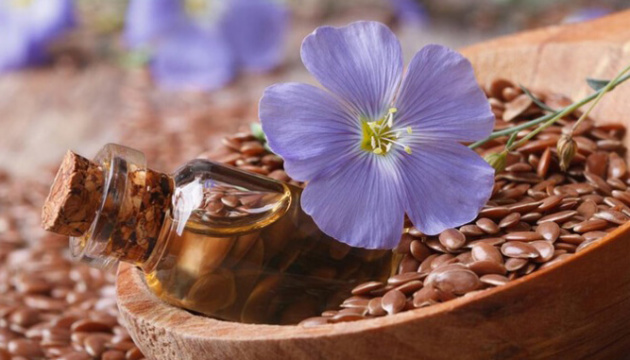
The Kherson region needs investments and grant projects to process small-seeded crops, such as flax, which is grown in frontline areas, as well as to build and restore grain elevators.
The relevant statement was made by Director of the Department for Agriculture and Irrigation Development at Kherson Regional State Administration Dmytro Yunusov in a commentary to Ukrinform.
“Last autumn farmers sowed over 110,000 hectares with winter crops. In addition, we are planning to sow another 136,000 hectares for the 2025 harvest. Thus, the total area will be 246,000 hectares. Now, we primarily need to sow sunflowers (more than 90,000 hectares), and farmers are actively sowing spring wheat, barley, peas, millet and flax,” Yunusov told.
In his words, flax used to be grown in the region prior to the Russian full-scale invasion. But, with the start of the Russian occupation, farmers were unable to harvest it. In 2023, about 1,000 hectares were sown with flax. In 2025, flax plantations will cover more than 3,000 hectares.
As noted by Yunusov, farmers from frontline regions see several advantages of growing flax, such as profitability and fire retardance. By comparison, many wheat and barley fields caught fire following Russian shelling last year. Despite being on duty around the clock, farmers were not always able to extinguish such fires.
According to Yunusov, the Kherson region lacks processing enterprises, namely those that handle small-seeded crops, such as flax, amaranth, as well as grain elevators.
“We lack processing enterprises to raise the profitability of products. We hope that we will be able to attract grants, implement investment projects related to processing and the construction of [grain] elevators. As you know, there are no elevators operating in the region. Logistics has been fully disrupted, which means that farmers spend additional funds. Farmers have to carry unprocessed grain to the Odesa and Mykolaiv regions, and elevators in other regions begin to lower the price due to humidity and residuals. Meanwhile, we have something to restore, or we can build some new facilities,” Yunusov explained.
In his opinion, such projects could be implemented in safer communities within the Kherson region, which are situated 40-50 kilometers away from the combat line, for example Velyka Oleksandrivka, Kalynivske, Kochubeivka, and Vysokopillia.
A reminder that farmers from the Kherson region are planning to sow about 246,000 hectares in 2025, which is 1.5 times higher compared to last year.
As of April 11, 2025, in the de-occupied Kherson region, 82% of farmlands were cleared of mines.
Source: Kherson region needs investments for flax, amaranth processing



